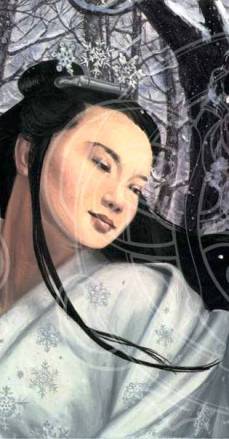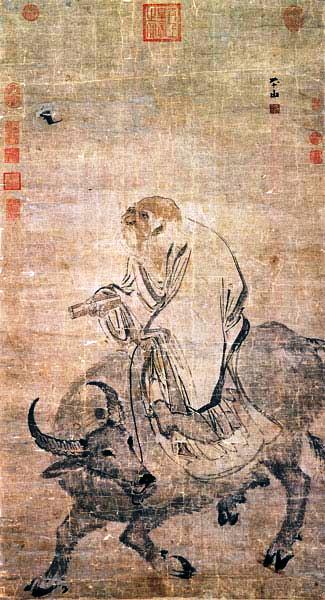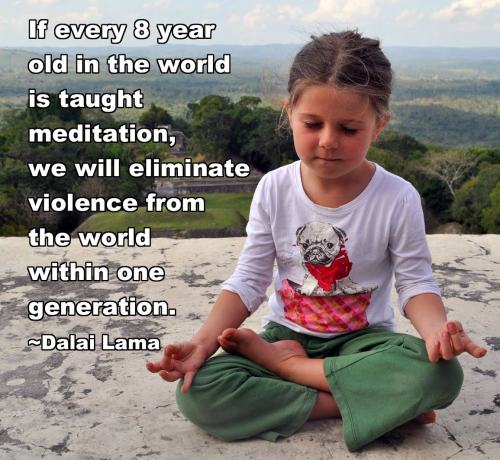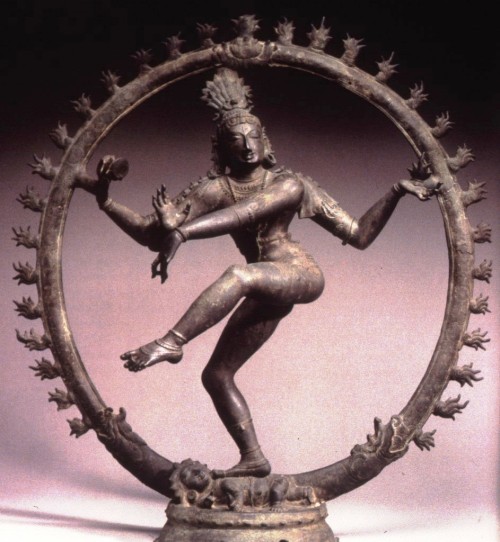
The Snow Maiden
LAO TZU is classed by H. P. Blavatsky as an awakened Master, a God-like being similar to Krishna, Buddha, and Jesus, who “united themselves with their Spirits permanently,” and “became Gods on earth.”
Such Personages are rare and superior to Moses, Pythagoras, and Confucius, who “have taken rank in history as demi-gods and leaders of mankind” (Isis 2:159).
Lao Tzu was the resuscitator of Taoism, the practical philosophy and religion of The Way.
Taoism is the ancient Wisdom-Religion of Theosophy. The Great Ones of old, described as Original Teachers, and They, as all Theosophists know, exist today and always will.
Lao Tzu was the most famous philosopher, mystic and alchemist in China. He is the author of the Tao Te Ching or the Way. He is regarded as one of the foundation stones of Taoism.
Originally, the word Tao meant a specific line of action, probably a military one, because the ideograms that compose this word mean “feet” and “leader.”

Olivia Bouler, an animal rights activist.
Lao Tzu interpreted the Tao as a way, the essence of the Universe. In a written poem Lao Tzu described “the Way” as the emptiness that cannot be filled, but from which everything manifests.
“I have three treasures. Guard and keep them,” Lao Tzu said. “The first is deep love, the second is frugality, and the third is not to dare to be ahead of the world. Because of deep love, one is courageous. Because of frugality, one is generous.”
Because of not daring to be ahead of the world, one becomes the leader of the world.”
In his most famous image, Lao Tzu is portrayed as riding a buffalo, because the domestication of this animal is associated with the Path of Enlightenment in Zen Buddhist traditions.

Lao Tzu on an Ox
“Don’t think you can attain total awareness and whole enlightenment without proper discipline and practice,” Lao Tzu warned. “This is egomania.”
Appropriate rituals channel your emotions and life energy toward the light. Without the discipline to practice them, you will tumble constantly backward into darkness.
♥
Tao Te Ching
It is believed that he lived to be 160 years old. In his old age, he received the visit of Confucius, who witnessed Lao Tzu reprimanding a young disciple for being too ambitious and prideful. Ancient tales said that Confucius was so impressed by the way of discipline of Lao Tzu that he compared him to a flying Dragon that can reach heavens and winds.
“I have just three things to teach: simplicity, patience,
compassion. These three are your greatest treasures.”
~Lao Tzu
He is considered by some to be just a mythical figure in the unconventional universe of ancient legends. One of these tales declares that he was born already with an appearance of an aged man, from which he received the name Lao Tzu, which means literally, “old sage.”

The Old Sage
Others consider this legend to be just a metaphor to describe the antiquity of Taoism and its philosophical concepts which were antecedents of the Tao Te Ching itself.
“The key to growth is the introduction of
higher dimensions of consciousness
into our awareness.”
~Lao Tzu
Many consider Lao Tzu as a great philosopher and he is often venerated as a saint. He was an expert on the art of living a simple but fully spiritual life. From his teachings, we can gather some important precepts that can serve as guides throughout our own life journeys.
Being Humble
“Great acts are made up
of small deeds.”
~ Lao Tzu
A Baby Swan Feeds His
Fish Friends Every Day.
Lao Tzu on Water
The Master explains the concept of humbleness through the analogy with water. Comparing the Human being to the water, he says that the good individual is like water, nurturing and maintaining life — but never trying to conquer the elevated positions.
“In the world, there is nothing more submissive and weak than water. Yet for attacking that which is hard and strong
nothing can surpass it”
~Lao Tzu
Tao of Physics
In 1975, one hundred years after H. P. Blavatsky re-founded the Theosophical Movement, the physicist Fritjof Capra wrote a book which made him famous among the general public, and unpopular with most of his colleagues. The book, as many know, was called “The Tao of Physics.”
Soft is Strong
The water is content to keep its dominions at the lower levels since it knows that the oceans control the flow of all the currents and rivers because they are in a lower position than they are.
He also explains that there is nothing more flexible than water, but nothing can surpass it when it comes to weakening the hard rock. In other words, the weak can win over the strong and the soft can conquer the rigid, just by being malleable and humble.
“Be Content with what you have; rejoice in the way things are. When you realize there is nothing lacking,
the whole world belongs to you”
~Lao Tzu

Meditation
If you want to receive, you need to first give, which is the law of the seeds and the wise harvest. This precept conceives a humble attitude before the people in your life and life in general, remembering that we are all in the same path of learning and all deserve respect. In summary, there is no one that deserves hatred and everyone is in the pursuit of happiness.
“When you are content to be simply yourself
and don’t compare or compete, everybody will respect you”
![]()
Kindness & Compassion
“Kindness in words creates confidence.
Kindness in thinking creates profoundness.
Kindness in giving creates love.”
~Lao Tzu
The master Lao Tzu related two big treasures of the soul — compassion and the humble desire of just being the self by disregarding the impulses of the Ego, versus to be always the first in everything.

Moms and Babies
In learning compassion, one develops the genuine interest for the well-being of others, meaning that they will not forget them in their path of development and self-enlightenment.
“Treat those who are good with goodness, and also treat those who are not good with goodness. Thus goodness is attained.
Be honest to those who are honest, and be also
honest to those who are not honest.
Thus honesty is attained.”
~Lao Tzu
East Meets West
Openness
Lao Tzu illustrates this concept of being Compassionate and Kind again through the malleable configuration of the water and its relationship as the essential element of life. He says that while a person is alive, their body is flexible and soft; but when they die, the body becomes hard and rigid. The same phenomenon happens to plants; while alive they are vibrant and bendable, but they become dry and breakable when they die.
“Nothing is softer or more flexible than water,
yet nothing can resist it”
~Lao Tzu
Consequently, to be inflexible and rigid is to be like one is actually dead. Maintaining yourself docile as the water, open and malleable, prepared to bend and render when it is necessary will lead the soul to the path of success.
Limiting Desire
“He who is contented is rich”
~ Lao Tzu

Living in the Present
Lao Tzu affirms that people that take less will always have more. People with insatiable desires end up becoming obsessed with the object of their “affection” which tends to throw their energies, and their thought processes, out of control.
To Lao Tzu, greed without limits constituted the worse of the vices. If you work towards being content with what you have, you would find that you already have enough to be happy. One can easily reach Peace of Spirit when you limit the number of desires to manifest in your life.
“The sage does not hoard. The more he helps others, the more he benefits himself, the more he gives to others, the more he gets himself. The Way of Heaven does one good but never does one harm. The Way of the Sage is to act but not to compete.”
~Lao Tzu

Shiva as Nataraja, the lord of the dance
The First Step
“The journey of a thousand miles
begins with one step.”
~ Lao Tzu
It is always better to deal with facts and situations while they are small before they become bigger and more difficult. If one is planning to reach a big goal, one should establish a series of small steps that would guide one safely to the destination. This is essentially the principle of Kaizen: progress through small increments.
The majority of text and graphics re-posted from:
The Spiritual Way of Lao Tzu
–On the Art of Living
♥






There have been many Buddhas & probably many Krishnas which is just another way of saying there have been many awakened ‘souls’.
However surely you jest when you refer to Jesus (Christ) – I assume it is he to whom you refer. Blavatsky says that Jesus was not an historical person. I agree as do many others who prefer to remain unbrainwashed.
Again I post
“…Jesus Christ, i.e., the Man-God of the Christians copied from the Avatâras of every country, from the Hindu Krishna as well as the Egyptian Horus, was never a historical person. He is a deified personification of the glorified type of the great Hierophants of the Temples, and his story, as told in the New Testament, is an allegory, assuredly containing profound esoteric truths, but still an allegory. Every act of the Jesus of the New Testament, every word attributed to him, every event related of him during the three years of the mission he is said to have accomplished, rests on the programme of the Cycle of Initiation, a cycle founded on the Precession of the Equinoxes and the Signs of the Zodiac….”
“The legend of which I speak is founded….on the existence of a personage called Jehoshua (from which Jesus has been made) born at Lüd or Lydda about 120 years before the modern era….In spite of all the desperate research made during long centuries, if we set aside the testimony of the ‘Evangelists,’ i.e., unknown men whose identity has never been established, and that of the Fathers of the Church, interested fanatics, neither history, nor profane tradition, neither official documents, nor the contemporaries of the soidisant drama, are able to provide one single serious proof of the historical and real existence, not only of the Man-God but even of him called Jesus of Nazareth, from the year 1 to the year 33. All is darkness and silence….The biography of Jesus was invented after the first century….” H.P. Blavatsky
……and furthermore have a read of this wonderful site
http://www.jesusneverexisted.com/surfeit.htm
Happy new year
LikeLike
Thanks for your comments and welcome quotes. We always need to exercise caution when quoting HPB, as she did not always make clear even using the same terms as she often did, in various places. She refutes the Christian narrative around Jesus, while showing the deeper doctrine around that “noble Reformer.” Isis Unveiled is an excellent source for a lot of it:
“The three personalities of Krishna, Gautama, and Jesus appeared like true gods, each in his epoch, and bequeathed to humanity three religions built on the imperishable rock of ages. That all three, especially the Christian faith, have in time become adulterated, and the latter almost unrecognizable, is no fault of either of the noble Reformers. It is the priestly self-styled husbandmen of the “vine of the Lord” who must be held to account by future generations. Purify the three systems of the dross of human dogmas, the pure essence remaining will be found identical.”
– H.P. Blavatsky, “Isis Unveiled” Vol. 2, p. 536
In the second of her series of three articles titled “The Esoteric Character of the Gospels,” HPB says, “Reference is made here to the Rabbinical tradition in the Babylonian Gemara, called Sepher Toldos Jeshu, about Jesus being the son of one named Pandira, and having lived a century earlier than the era called Christian, namely, during the reign of the Jewish king Alexander Jannaeus and his wife Salome, who reigned from the year 106 to 79 B.C. Accused by the Jews of having learned the magic art in Egypt, and of having stolen from the Holy of Holies the Incommunicable Name, Jehoshua (Jesus) was put to death by the Sanhedrin at Lud. He was stoned and then crucified on a tree, on the eve of Passover.”
Well Worth Reading Entire:
https://www.theosociety.org/pasadena/hpb-sio/sio-eso2.htm
To the true follower of the SPIRIT OF TRUTH, it matters little, therefore, whether Jesus, as man and Chrestos, lived during the era called Christian, or before, or never lived at all. The Adepts, who lived and died for humanity, have existed in many and all the ages, and many were the good and holy men in antiquity who bore the surname or title of Chrestos before Jesus of Nazareth, otherwise Jesus (or Jehoshua) Ben Pandira was born. Therefore, one may be permitted to conclude, with good reason, that Jesus, or Jehoshua, was like Socrates, like Phocian, like Theodorus, and so many others surnamed Chrestos, i.e., the ‘good, the excellent,’ the gentle, and the holy Initiate, who showed the ‘way’ to the Christos condition, and thus became himself ‘the Way’ in the hearts of his enthusiastic admirers.”
She doesn’t say that the assertions of this tradition are necessarily entirely accurate in every single respect but, when informed that certain scholars consider it erroneous to say that Jesus or the spiritual Teacher on whom “Jesus” is based lived “a century earlier” than is commonly believed, she responded by maintaining “I say the scholars are either lying or talking nonsense. Our Masters affirm the statement. If the story of Jehoshua or Jesus Ben-Pandira is false, then the whole Talmud, the whole Jewish Canon is false. He was the disciple of Jehoshua Ben Perahiah, the fifth President of the Sanhedrin after Ezra who re-wrote the Bible. Compromised in the revolt of the Pharisees against Jannaeus in 105 B.C., he (Jehoshua Ben Parahiah) fled into Egypt carrying the young Jesus with him. This account is far truer than that of the New Testament which has no record in history.” (“Theosophy: Some Rare Perspectives” p. 47)
According to Theosophy, a spiritual Teacher did exist in that part of the world sometime around that time, some of whose teachings and activities bore some similarities to those later described in the Christian Gospels (which, let us remember, are categorically proven to have not been written in anything resembling their present form and content until at least 300 A.D. at the very earliest and thus not by the four Apostles at all!) and that the Jesus of the Christian Church is largely just a fictitious, fantastical, and distorted copy of this actual individual, who may indeed have been named Jehoshua or Yeshua.
LikeLike
Reblogged this on Anniegoose's Blog.
LikeLike
Thanks for the reblog! 🙂
LikeLike
Brilliant.
LikeLike
Hey, thanks for your comment. Cheers in the New Year!
LikeLike